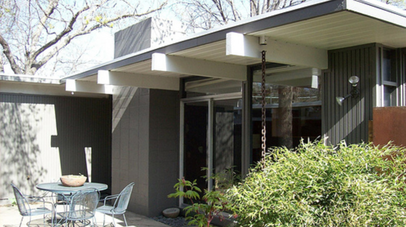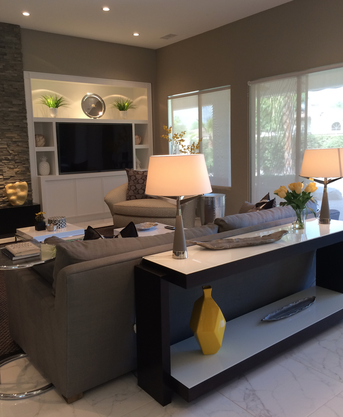 I’ve been thinking a lot recently about trends in Interior Design. A trend, by definition, whether it is apparel design, product styling or even the “colour d’jour” is a reflection of what seems to be happening at any given time. Trends are what people are talking about in our interactions with one another and a part of our changing behavior in a dynamic society. And they can be an indicator of our social and cultural values. For those in the interiors profession, we often see design trends emerge in trade magazines but in reality, they are frequently editorialized, thinly-veiled promotions of products, heralded by a faux-celebrity as the best thing since sliced brocade. Some trends will have a short shelf life if they don’t quickly gain acceptance by the design community even before the public can be exposed to the product. Such is the roller-coaster nature of trendy design.  So why do people follow design trends? Trends are embedded in our culture. I think it is fair to say that all of us are drawn to something that is new or novel, things that provide a feeling of wellbeing. We all feel the need to be a part of a bigger something. For some, we can be influenced by a bit of peer pressure. For others, myself included, we may think of ourselves as early trend adopters and as such, we want to be ahead of the pack. But as our homes are the largest single investment we make and to enhance that investment, one’s interior shouldn’t be subject to the whims of what is most popular at any particular moment. Case in point is the current trend to “stage” an interior that appears to be ripped out of a page of the May, 1961 issue of Life Magazine. Perhaps this retro Mid-Century mania, encouraged by TV shows like Mad Men combined with a touch of good, old-fashioned nostalgia, could be one of the factors driving this au courant trend. Mid-century design, for what it was at the time, was very innovative and quite progressive. The style grew in popularity in residential and commercial design by bringing a cost-effective, modernist approach to America's post-war suburbs, certainly influenced by the International Style and Bauhaus movements of the early 20th Century. Fussy, hand-carved design gave way to simplified mass-produced furnishings and built-in storage became a must-have in every interior. Many great and significant design lessons came out of that baby boomer era that we still live with today: simple, uncomplicated lines, spaces that blended indoors with the out and introduction of new technology that boggled the mind like micro-wave cooking. And it taught many folk how to live with without excess clutter. But avocado green appliances, electric orange pole lamps, and form-fitting chairs covered in aqua “bullet-proof” Herculon fabric were simply not good design then nor now. Yet amazing to me, there are individuals today who relish in staging such interiors with a vengeance, cruising consignment stores every weekend and endless shopping the Internet for inferior Made-In-China knockoffs, resulting in a space that is a cross between George Jetson and George Nelson, uncluttered to be sure but sparse to a point of dysfunctional cartoon-like minimalism. Staged design, be it Mid-Century, Ranch or Spanish Revival, is just not for homes. It is for movies, TV and theatre,… or perhaps an Air BNB vacation rental for someone to indulge in for a few days, a time-capsule, glamorized fantasy of what it might have been like to live in Mad-May, 1961.  √ NEW TREND FOR 2016 So with the coming new year, I propose a new approach, a fresh design trend, a classic modern theme for this century. And I call it “Authentic Design” …or AD for short and there are three components of AD. •First and foremost, an AD interior is the careful assembly of a space that is an honest reflection of ourselves as individuals, defining our preferences, expressing our personalities, and mirroring our experiences. And it doesn’t look like anyone else’s home environment. •Second,... AD interiors are a collected look, bringing together pieces from many design themes and eras into an integrated whole. This is the backbone of timeless interiors. Scale and shapes are complimentary to one another while creating a highly visual concept. •Lastly, ...AD is successful as it permits the space to function as intended, one that supports our human endeavors within the built environment providing both safety and security while enhancing one’s comfort. So in my humble opinion, Authentic Design is THE classic power statement of interiors. Enough with living – and designing - seven decades in the past. And trust me. The only authentic glam thing in May of ‘61 was when Alan Shepard became the first American in space. Now that was Mid-Century Modern.
12 Comments
|
Michael is an award winning interior designer based in Palm Desert, CA. He is a Professional Member of the American Society of Interior Designers and a member of the ASID College of Fellows.
As a Certified Aging In Place Specialist, he creates smart looking spaces that are safe and secure and create homes for a lifetime. And with thirty plus years in the profession, he has honed his humor, elevated his passion for design and sharpened his wit to not take anything too seriously except his design work. Archives
February 2023
Categories
All
|


 RSS Feed
RSS Feed